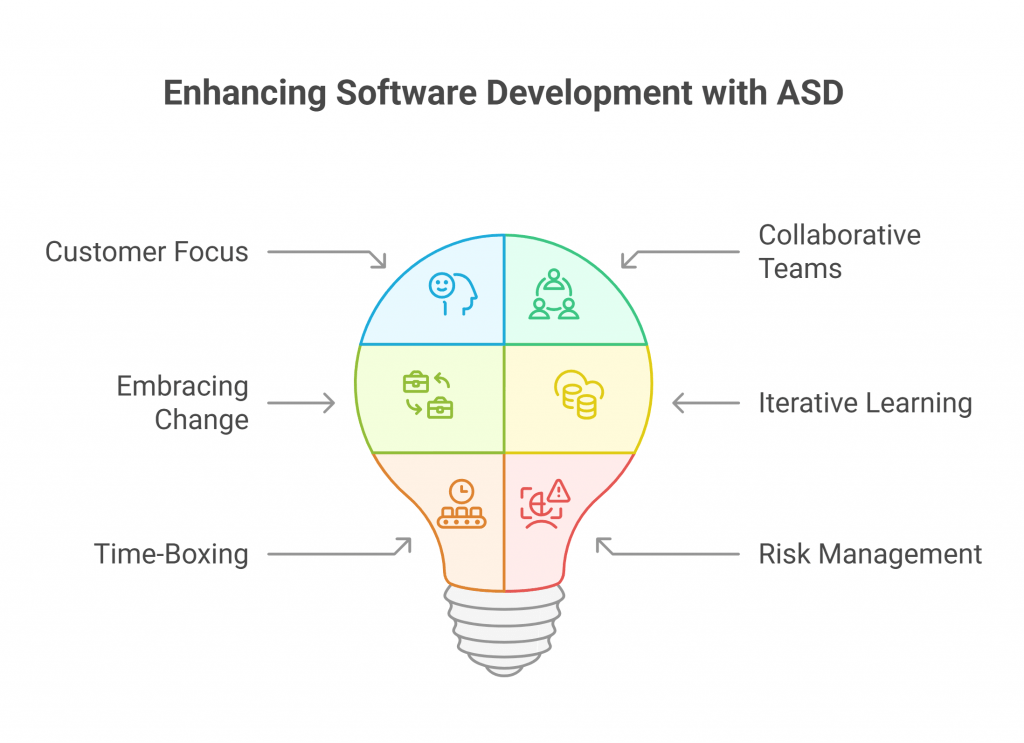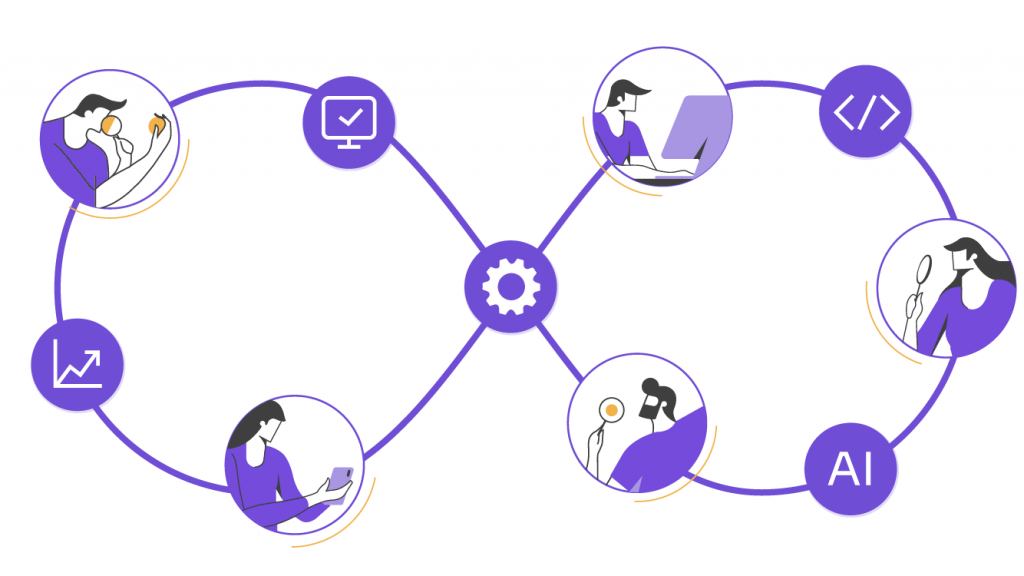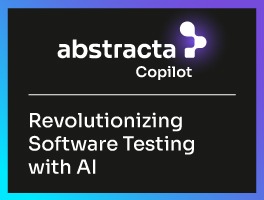Empower your team with Adaptive Software Development for evolving software projects. Discover real flexibility and continuous improvement with Abstracta.


Adaptive Software Development (ASD) plays a crucial role in modern software engineering. It offers an agile framework that focuses on flexibility and continuous learning. By prioritizing adaptation, collaboration, and iterative development, ASD allows teams to rapidly adjust to change and build robust software solutions that thrive in fast-paced environments.
The adaptive software development lifecycle is key to managing complex software systems that continuously evolve to meet market needs throughout the software development process.
Discover our solutions and book a meeting to explore how we can enhance your software development!
What Is Adaptive Software Development?


Adaptive Software Development (ASD) is an agile methodology built for complex projects with evolving requirements. It supports rapid development by encouraging flexibility, teamwork, and continuous feedback.
Adaptive Software Development replaces rigid, linear planning with a flexible approach that embraces change. Teams prioritize collaboration, continuous learning, and delivering functional software that adapts as needs evolve.
The Three Phases of ASD: Speculation, Collaboration, Learning
1. Speculation: Initial planning that embraces uncertainty and lightweight planning. This phase involves defining a high-level vision for the project, identifying potential risks, and setting up an iterative approach. It accepts that not all details will be known at the start, allowing the team to remain flexible and responsive to changes.
2. Collaboration: Team members actively communicate with each other and involve the client in a collaborative environment. Open communication fosters alignment and innovation. Frequent feedback loops between the team and stakeholders help refine the process and enable the project to meet evolving requirements
3. Learning: Teams continuously adapt and improve based on user feedback. This phase emphasizes experimentation and retrospectives to evaluate successes and challenges. The learning process not only enhances the software but also improves the team’s overall effectiveness.
These phases reflect the dynamic and fluid nature of modern projects. They help teams achieve rapid development and delivery of functional software that meets evolving customer needs and are particularly effective for highly uncertain projects.
Core Principles of the Agile Framework Behind ASD
Adaptive Software Development (ASD) is grounded in principles that help teams navigate uncertainty with confidence. At its core, ASD promotes customer focus, keeping real user needs at the center of every decision. This is reinforced by collaborative teams, where open communication and shared ownership drive alignment and innovation.
Another key principle is embracing change. Instead of resisting it, teams learn to expect shifting priorities and evolving goals, treating them as opportunities. Finally, iterative learning allows teams to reflect, adapt, and grow with each cycle, enhancing both the software and how it’s built.
Key Benefits of Using Adaptive Software Development


By following ASD principles, you will find out concrete benefits:
Customer Focus Enables User-Centered Value
By placing the client at the heart of every iteration, ASD enables evolving user needs to shape the outcome. This results in higher customer satisfaction and fewer costly pivots late in the process.
Collaborative Teams Drive Alignment and Innovation
Cross-functional teams working in sync reduce miscommunication and silos. Collaboration encourages faster feedback, shared responsibility, and solutions that reflect both technical and business goals.
Embracing Change Strengthens Project Resilience
ASD treats change not as a disruption, but as a constant. This mindset helps teams adapt quickly to shifting priorities, emerging risks, or new opportunities, without losing momentum.
Iterative Learning Fuels Continuous Improvement
Each iteration becomes a chance to reflect and refine, delivering functional software that evolves with user needs. Teams use retrospectives and user feedback to optimize processes, improve product quality, and build smarter with every cycle.
Time-Boxing Provides Structure in Uncertainty
Fixed iteration lengths help maintain focus and predictability. Teams plan realistically, prioritize effectively, and track progress without losing flexibility.
Risk Management Happens Early and Often
By surfacing risks early in the cycle, ASD prevents issues from derailing the project. Teams stay proactive, not reactive—avoiding rework and reducing overall project cost.
This adaptive approach strengthens software quality. It maintains flexibility in the development process and helps teams adapt quickly to changes. ASD also fosters teamwork in a supportive environment.
Let’s now explore how ASD compares to other agile methodologies, such as Rapid Application Development.
Revolutionize Your Testing with Abstracta Copilot! Boost productivity by 30% with our new AI-powered assistant for efficient testing.
Adaptive Software vs. Rapid Application Development


Adaptive Software Development and Rapid Application Development (RAD) both emphasize rapid iteration and client feedback. However, RAD focuses more on speed and prototype development. ASD is better suited for managing complex systems with frequently changing requirements, as it fosters continual learning and adaptation.
Here’s how they differ:
- RAD: Focuses on quick prototype delivery with minimal iterations.
- ASD: Encourages iterative feedback and continuous adaptation over extended cycles.
Overall, ASD is a flexible development model that helps teams manage complex software systems with evolving requirements. It focuses strongly on adapting to evolving client needs, making it a new project management approach that is highly effective in dynamic environments.
With this comparison complete, let’s look at how quality assurance fits into an adaptive environment.
Shift-Left Testing in Adaptive Software Development


While ASD and RAD differ in how they handle iteration and learning, both aim for speed and responsiveness. What sets ASD apart even further is how it redefines quality assurance.
In Adaptive Software Development, testing shifts left—starting from the very beginning of the process. QA isn’t a phase that follows development, but a collaborative, ongoing activity across iterations. Software developers, testers, and stakeholders work together to surface risks early and shape the product with constant feedback.
This shift-left testing approach reduces delays, improves software quality, and supports the adaptability that ASD demands.
Let’s now look at how to measure progress in adaptive environments.
Metrics That Matter in Adaptive Software Development Lifecycle


Measuring progress in ASD requires specific metrics, which help teams assess their adaptability and performance. They track progress while keeping software quality consistent. This consistency enhances user satisfaction and drives project success.
Here are some essential metrics:
- Velocity: Tracks the amount of work completed in each iteration.
- Lead time: Measures the time a feature takes to move from project initiation information to completion.
- Defect rates: Monitors the number of bugs found and resolved during each cycle, helping the development team maintain software quality.
Tracking these metrics allows teams to adjust their processes and improve software quality. Each iteration adds value and aligns with project requirements.
Building Cross-Functional Teams for ASD Success


A key feature of ASD is the use of cross-functional software development teams. These teams include developers, testers, product owners, and stakeholders. They collaborate continuously to align the software with technical and business needs in a collaborative environment.
Next, we share the main benefits of cross-functional teams in ASD:
- Diverse expertise: Team members from various disciplines work together to solve complex applications and problems.
- Improved communication: Ongoing collaboration ensures alignment on project goals.
- Faster feedback: Continuous feedback loops help teams address issues quickly. This approach also accelerates release cycles.
Cross-functional teams are essential for ASD projects, fostering collaboration and innovation throughout the development cycle.
To maximize its potential, we’ll examine how ASD’s client-centric approach sets it apart from other development methodologies.
A Client-Centric Approach to Software Development
Unlike traditional models, Agile Software Development (ASD) places the client at the center of the development process, driving every stage with continuous client feedback.
Here’s how it works:
- Involvement: Clients engage with the team at every iteration, providing user feedback as the software evolves.
- Flexibility: The development team adapts to changing client needs, allowing the software to meet expectations and align with market demands.
- Collaboration: Regular meetings between the client and the team maintain alignment and drive continued progress.
By maintaining close communication with the client, ASD keeps the software aligned with their goals and reduces the risk of costly revisions later in the project.
Conclusion – Adaptive Software Development


Adaptive Software Development offers a flexible, client-centric approach that enables teams to navigate evolving project requirements while maintaining high-quality standards. By integrating continuous learning, collaboration, and iterative feedback, ASD helps businesses stay competitive in fast-changing markets.
As software systems grow more complex, adopting frameworks like ASD becomes crucial for long-term success. Embracing this adaptive approach will allow your team to deliver software that meets the needs of today and is prepared for the challenges of tomorrow and much beyond.
FAQs about Adaptive Software Development


General Concepts
What Is Adaptation in Software Development?
Adaptation refers to a team’s ability to adjust the development process in response to feedback or evolving requirements. This adjustment allows the final product to meet new needs.
What Is Adaptive Software Development Used for?
ASD is ideal for projects with frequently changing requirements. It provides a flexible framework that helps teams adapt while maintaining high quality.
What Are The Principles of Adaptive Software Development?
The key principles include customer focus, collaborative teams, embracing change, and iterative learning. These guide how teams navigate uncertainty and deliver adaptive, high-quality software.
Benefits & Practices
What Are The Benefits Of Adaptive Software Development?
Adaptive Software Development puts customer needs at the center, promotes collaboration across teams, and embraces change as part of the process. It also supports iterative learning, proactive risk management, and clear focus through time-boxing.
Why Is Customer Focus Important In Adaptive Software Development?
It helps teams align the product with evolving user needs. Frequent feedback reduces rework and helps the software stay relevant over time.
Why Do Collaborative Teams Matter In Adaptive Software Development?
Working together across roles builds shared understanding. It speeds up feedback and helps connect technical work with business goals.
Why Is Embracing Change Critical In Adaptive Software Development?
Change is treated as part of the process, not a disruption. This mindset helps teams adapt quickly to shifting goals or priorities.
How Does Iterative Learning Benefit Adaptive Software Development?
Each cycle allows the team to reflect, adjust, and grow. This approach improves both the product and how the team works together.
Why Is Time-Boxing Useful In Adaptive Software Development?
Time-boxing provides structure and focus. It helps teams deliver consistent progress while staying flexible when priorities shift.
How Does Risk Management Work In Adaptive Software Development?
Risks are reviewed continuously throughout the process. This helps teams respond early to potential issues and avoid major disruptions.
Methodology Comparisons
What Is The Difference Between ASD and Scrum?
Both are agile frameworks, but ASD is more fluid. It emphasizes continuous learning and adaptability, while Scrum follows fixed roles, sprints, and ceremonies.
What Is The Difference Between Adaptive and Dynamic Software Development?
ASD focuses on flexibility, feedback, and team collaboration. Dynamic Systems Development Method (DSDM) is more structured, with fixed phases and strict timeframes.
What Is The Difference Between Adaptive Software Development and Feature-Driven Development?
ASD adapts to changing requirements through learning and iteration. Feature-Driven Development delivers predefined features with less focus on flexibility during the process.
Lifecycle & Process
How Does ASD’s Cycle Of Speculate, Collaborate, And Learn Improve Software Adaptability?
It helps teams stay flexible by planning lightly, involving stakeholders, and learning from each iteration. This loop supports fast adjustments through adaptive cycle planning as requirements shift.
What Makes ASD More Flexible Than Traditional Waterfall Or RAD Methods?
ASD doesn’t rely on fixed plans. It adapts to change, values learning, and delivers software in small, meaningful increments—unlike rigid or speed-focused models.
How Do Short Iterations In ASD Help Manage Project Risks Effectively?
Short cycles allow early issue detection, user feedback, and continuous course correction. This reduces risks before they become costly or derail the project.
Why Is Embracing Change Crucial In ASD For Complex Business Environments?
Change is expected in complex systems. ASD treats it as part of the process, helping teams respond quickly and align software with real-time business needs.
In What Ways Do The Phases Of ASD Promote Continuous Learning And Project Success?
Each phase builds on feedback. The phase “Speculation” welcomes uncertainty, “Collaboration” aligns efforts, and “Learning” drives improvement—enabling better outcomes every cycle.
How We Can Help You


With over 16 years of experience and a global presence, Abstracta is a leading technology solutions company with offices in the United States, Chile, Colombia, and Uruguay. We specialize in software development, AI-driven solutions, and end-to-end software testing services.
Our expertise spans across industries. We believe that actively bonding ties propels us further and helps us enhance our clients’ software. That’s why we’ve built robust partnerships with industry leaders like Microsoft, Datadog, Tricentis, Perforce BlazeMeter, and Saucelabs to provide the latest in cutting-edge technology.
Our holistic approach enables us to support you across the entire software development lifecycle.
Ready to improve your development process?
Contact us to discuss how we can help you grow your business.


Follow us on Linkedin & X to be part of our community!
Recommended for You
Better Your Strategy with This Software Testing Maturity Model
Tags In


Abstracta Team
Related Posts
Master the Software Development Life Cycle
Discover how the software development life cycle fosters high-quality software through structured processes, from initial planning to deployment and beyond. Learn how to optimize each development phase for success. The software development life cycle (SDLC) serves as the backbone of creating quality software. It’s a…
Software Development Methodologies: Choose The Right Approach for Your Team
Discover key software development methodologies that drive project success. Learn how to choose the right approach for your team’s needs with Abstracta.
Search
Contents
Categories
- Acceptance testing
- Accessibility Testing
- AI
- API Testing
- Development
- DevOps
- Fintech
- Functional Software Testing
- Healthtech
- Mobile Testing
- Observability Testing
- Partners
- Performance Testing
- Press
- Quallity Engineering
- Security Testing
- Software Quality
- Software Testing
- Test Automation
- Testing Strategy
- Testing Tools
- Work Culture





